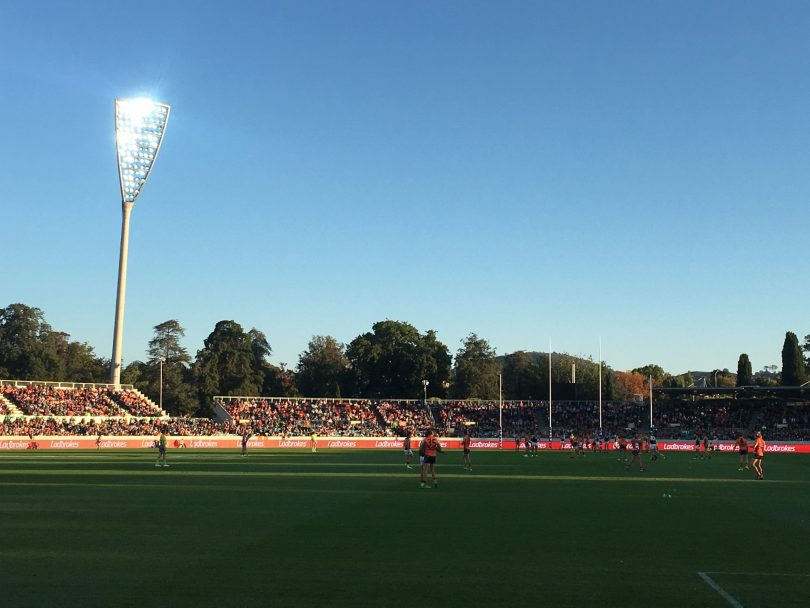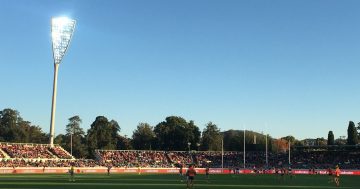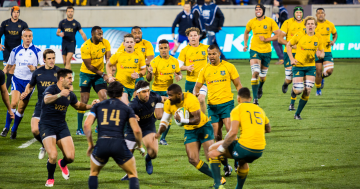
Interest in AFL can’t be entirely attributed to the success of GWS but it is playing a significant role.
When GWS are in Canberra, the Manuka precinct turns orange as supporters mill in anticipation.
That is the most visible image of the impact the Giants are having on Canberra.
Venture into other areas of the ACT and the work performed by GWS development officers is starting to pay dividends. Over the past four years, the growth in juniors has been around 5.5 per cent while the senior’s growth is a steady two per cent.
Much of the significant growth in the juniors can be put down to the number of girls taking up the sport at the youth level. This can largely be attributed to the exposure gained through the AFLW.
Not only is there a visible image of senior girls’ playing in front of decent crowds on television, but there is also now a pathway, which was previously non-existent.
This year, the growth in women playing led to the introduction of a women’s Division 2 competition. But the growth isn’t confined to the women’s competitions.
There has also been a surge in interest in local competitions as evidenced by around 3,000 spectators turning out on Sunday for the AFL Canberra grand finals at Manuka.
Interest in AFL can’t be entirely attributed to the success of GWS but it is playing a significant role. The Giants’ presence in the schools with four development officers is paying dividends.
Garry Lawless is the Community Football manager in Canberra. He says, “The AFL community has bought into the Giants.”
The thinking behind this is that through numbers of young supporters being exposed to GWS as their first team, a lifetime commitment will develop, especially if the side is successful in those formative years.
There have been a few false starts with AFL over the years with Fitzroy and North Melbourne, but it would appear those days are long gone.
With GWS currently negotiating an extension of their current 10-year deal with the ACT Government, there is a sense of optimism within the AFL Canberra community.

















